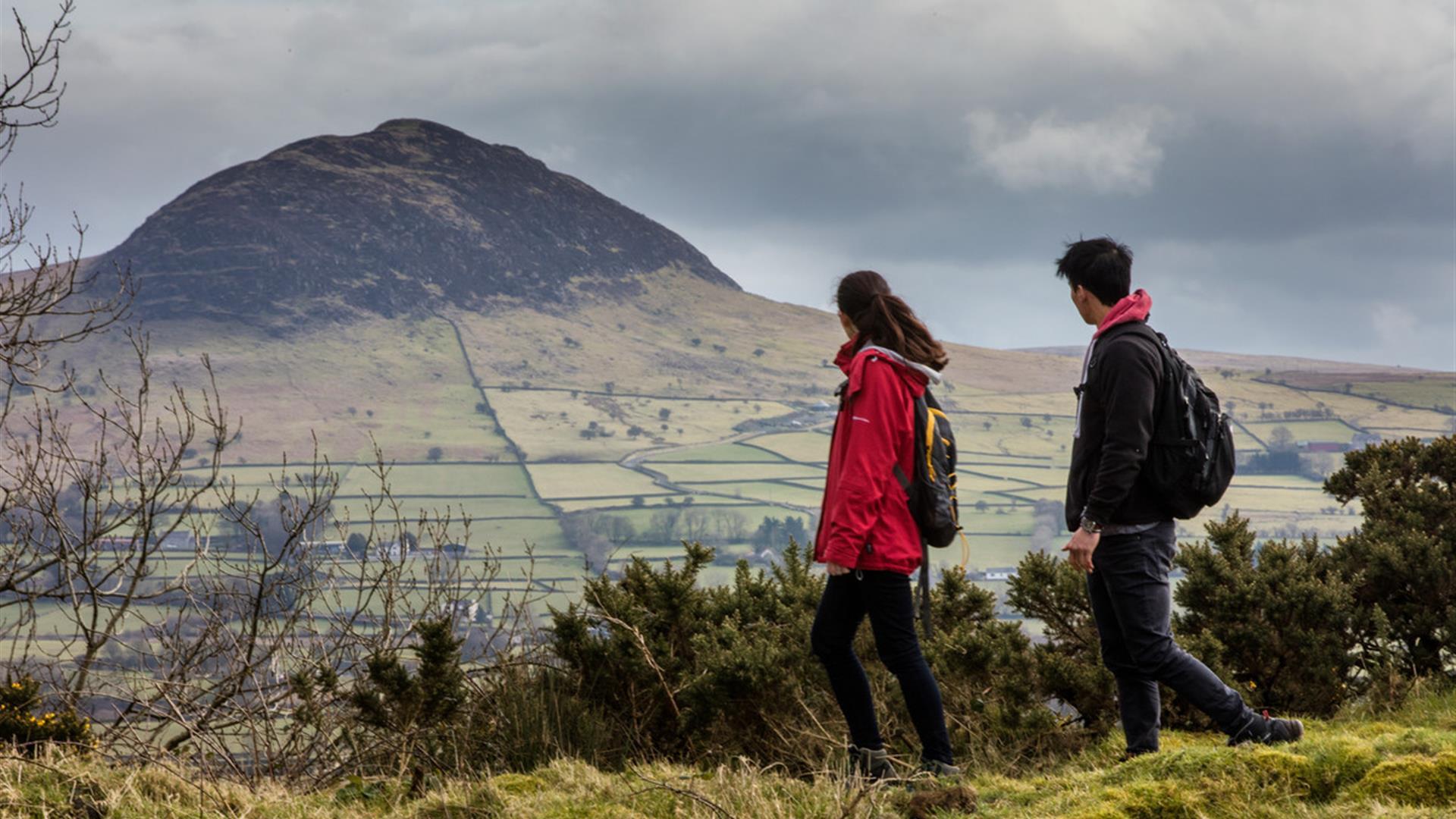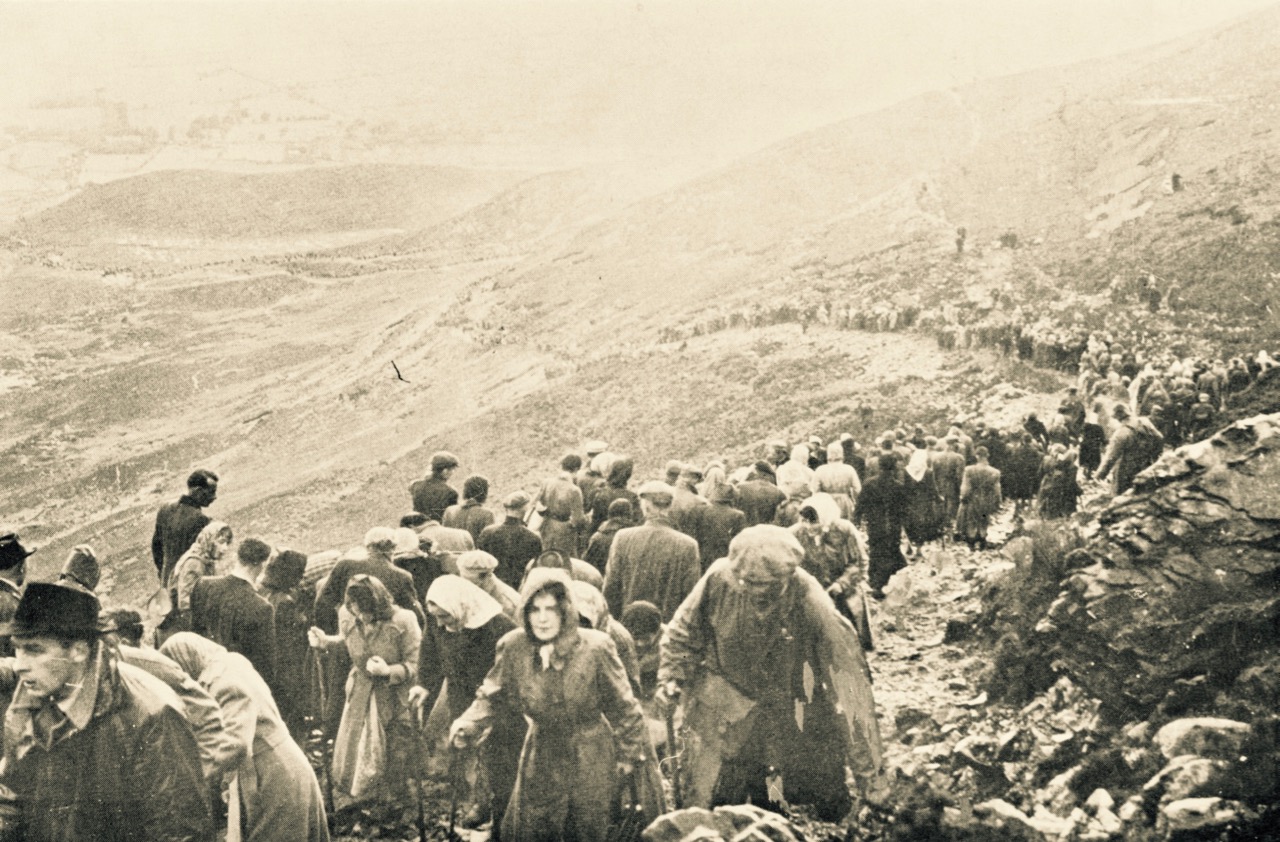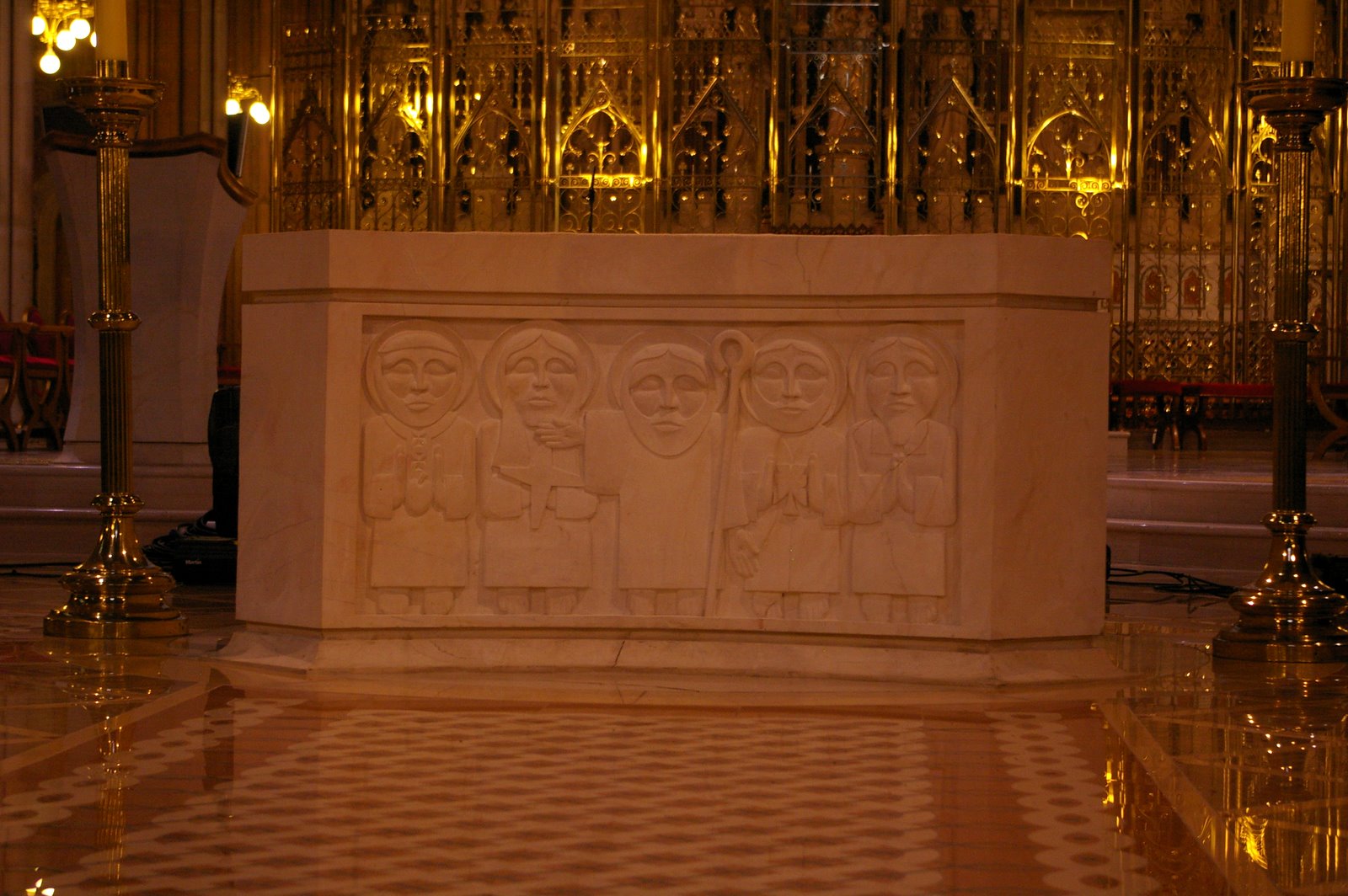Get your green credentials and impress friends and distant relatives this 17th of March with our quick guide to St Patrick.

Picture above: Mary Shanahan, Queen of the Plough 1961
FAQ1: Who is Saint Patrick and where was he from?
Patrick's real name was likely Maewyn Succat, born circa 386 A.D to Calphurnius, a deacon from a wealthy Roman family. His mother was a close relation to Saint Martin of Tours and his grandfather was also a member of the clergy. As a teenager, St. Patrick was captured by Irish pirates and brought from Wales to work as a slave - looking after pigs on the Slemish Mountain, County Antrim. He spent 6 hard years there. After escaping slavery, he was called back to Ireland in a dream and upon his return began converting pagans.
One convert donated a barn for him to hold his services. This is now known as Saul Church (pictured below), County Down. Originally made of wood, the church was been rebuilt many times most recently in 1932 to celebrate the 1,500th anniversary of its foundation. He took on the name Patrick after becoming a priest.
LEARN MORE: Ireland's Historic Buildings
Did you know? Most people think St. Patrick looked after sheep however the land around Slemish is peat bog and it was not possible to keep sheep there because of the prevalence of liver fluke worm. Today, you'll see lots of sheep there, but that is only because of a treatment for the parasite in the early 1900s. Thanks to local farmer, Hugh who emailed in with this information and whose family have been farming in the area since the 1750's.
FAQ2: Why was he made Patron Saint of Ireland?
Patrick is one of three Irish patron Saints, Brigid and Columa being the other two. Patrick is accredited with bringing Christianity to the Irish people. After he escaped captivity he travelled to France and was ordained a priest and later a bishop. 12 years later he returned to Ireland on the back of a dream he had that Irish people were calling him to tell them about God. For the next two decades he travelled across the country baptising people and establishing monasteries, schools and churches and converting many thousands to Christianity.
READ MORE: Guide to Irish Monasteries
The Rock of Cashel, Co. Tipperary is where St. Patrick baptised Aenghus, the King of Munster. This marked the end of paganism and is one of the most important heritage sites in Ireland.

FAQ3: What is the most famous Saint Patrick Legend
The most famous legends take place at Lough Derg, County Donegal. One sees him hunting the last snake from Ireland and turning the lake red with its blood, the other has Christ revealing the entrance to Hell to Patrick in a cave.
FAQ4: How did our ancestors celebrate Saint Patrick?
Prior to the 1970's, Saint Patricks Day was considered a holy day of obligation and still is by many practicisng Catholics today. It was illegal for pubs to be open on St. Patrick’s Day in Ireland until the late 1970’s, because of the holiday’s religious nature. Typically families would attend mass in the mornings. It was and still is considered by many as a day for 'breaking lent' a day off from the Easter pledges and fasting where families could eat meat for one day in between the Lenten probhibition.
LEARN MORE: Guide to the name Patrick
FAQ5: Who invented the Parade?
Parades are a tradition created by the Irish diaspora. The first St. Patrick’s Day parade took place not in Ireland but in America. Historian Michael Francis discovered the first record of a parade celebrating St. Patrick in a Spanish colony in what is now St. Augustine, Florida in 1601. More than a century later, homesick Irish soldiers serving in the English military marched in New York City on March 17, 1772 to honor the Irish patron saint.
But most agree it was New York that created the modern traditions. Today, that parade is the world‘s oldest civilian parade and the largest in the United States, with over 150,000 participants. Each year, nearly 3 million people line the 1.5-mile parade route to watch the procession, which takes more than five hours.
FAQ6: When was the first Irish parade?
The St. Patrick’s day parade didn’t make it’s way to Ireland until 1931, when the first parade was held in Dublin. In fact, up until the 1970s, Irish laws mandated that pubs be closed on March 17. Beginning in 1995, however, the Irish government began a national campaign to use interest in St. Patrick’s Day to drive tourism and showcase Ireland and Irish culture to the rest of the world. Though the Irish and other European countries have been celebrating St. Patrick’s Day in different forms since the ninth century, it didn’t become an officially recognized holiday in Ireland until 1903.
FAQ7: Where are the most famous St.Patrick Landmarks in Ireland?
- Slemish Mountain, County Antrim - The mountains were he worked as a slave herding sheep

- Saul Church, County Down - The donated barn used by Saint Patrick to hold mass

- Lough Derg, County Donegal - The scene of two famous lengends, one that saw him hunting the snakes from the island and the second that saw him turning the lake red

- Hill of Slane, County Meath - the scene of Patricks retaliation fire on Easter morning in defiance of the High Kings. Watch the newsreport from 1966 below, courtesy of RTÉ archives
- The Rock of Cashel, County Tippeary - Site of the King of Munsters' Baptism
- Croagh Patrick, County Mayo - Annual pilgrimage to the top of Croagh Patrick on Reek Sunday, the site where Patrick fasted for 40 days during Lent

Image Credit - Roaringwater Journal
- Down Catheral, County Down - Saint Patricks final resting place.
- Saint Patrick Centre, County Down - The only exhibition in the world dedicated to the Saint. It features the worlds tallest Saint Patrick at it's entrance!

- Saiat Patricks Cathedrals, Armagh City - The alter below includes St.Patrick alongside St. Malachy, St.Bribid and St. Plunkett. The Cathedral parish includes the churches of: St. Patrick' Cathedral, the Church Of St Malachy, the Church of St Colmcille at Knockaconey, and the Church of The Immaculate Conception in the Tullysaran District of Armagh.

FAQ8: How you do wish someone Happy St Patricks Day in Irish?
The most common way of wishing someone “Happy St. Patrick's Day” in Irish is: “Lá Fhéile Pádraig sona duit!” The expression means “Happy St. Patrick's Day to you!” and is pronounced: “Law leh Paw-drig suna ghit.” The phrase changes slightly when you are wishing "Happy St. Patrick's Day" to more than one person.
Simply change the word "duit" to "daoibh" which also means "to you," but in the plural form, giving you: “Lá Fhéile Pádraig sona daoibh.”
Pronounce this Irish greeting as “Law leh Paw-drig suna yee-uv."
FAQ9: What's the most popular song sang on St.Patricks Day?
Well, according to Youtube, the most streamed song last St.Patricks Day 2022 was Flogging Molly - Drunken Lullabies followed by Whiskey in the Jar from the Dubliners.
FAQ10: Where is Saint Patrick laid to rest?
St. Patrick Centre, Co. Down in the only exhibition in the world devoted to the saint. There are interactive displays and collections of art and intricate metalwork from the Early Christian period. The mortal remains of St. Patrick were buried at Down Cathedral, Co. Down after his death in 461AD. This cathedral is now a place of pilgrimage and prayer.
Read More
- Do you have an ancestor named Patrick?
- The Story of Saint Patrick
- Saint Patricks Day Food
- Hurling - The Fastest Game in the World
We hope you have found the information we have shared helpful. While you are here, we have a small favour to ask. Ireland Reaching Out is a non-profit organisation that relies on public funding and donations to ensure a completely free family history advisory service to anyone of Irish heritage who needs help connecting with their Irish place of origin. If you would like to support our mission, please click on the donate button and make a contribution. Any amount, big or small, is appreciated and makes a difference.